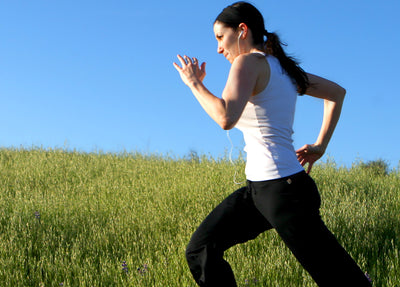
The Joy of Running
Running is truly a lifelong sport and said to be the best workout for people of all ages. Variation in pace, distance, stride, and environment make it suitable for everyone. In fact, there is a growing emphasis on research about running as you age. Moderate running, said to mean going out three to four times a week at a moderate pace, is found to be even more beneficial for the body than more intense, frequent runs. Taking running at your own pace, both literally and figuratively, is the key to making it work for your individual body. Beginners and running can mesh naturally with a little patience.
Assumptions
Many are under the impression that running negatively impacts joints, but correct alignment helps prevent injury fairly comprehensively. You might be wondering, "How do I start running?" Using scheduled walking breaks to train and starting out slowly are other tools to help ease into a running routine, particularly for a new runner. By paying attention to your body, listening to joints and muscles, and incorporating training advice, your routine will evolve naturally. Over time, you’ll become increasingly comfortable playing with distance and pace.
Health Benefits
Health benefits of running are numerous, and include cardiovascular health, circulatory improvement as blood flow gets stronger and more efficient, less weight gain, increased bone strength, and more. The heart benefits from any aerobic exercise. As it pumps blood to the rest of the body, circulation becomes less of a strain. Fat burn from increased muscle usage and muscle toning around joints helps to simultaneously decrease weight and increase bone support. Not only does running benefit physical health, but mental and social health. The repetitive motion of running can serve as a sort of meditation for the brain. Focusing on the actual activity instead of letting the mind wander provides a grounding effect and a break from daily tasks. Running in a group or with a partner also adds the opportunity for a social benefit.
Pain Relief
With all that running has to offer, who wouldn’t want to give it a whirl? Although it does help many facets of the body, there is a risk of some muscle and joint discomfort or "running pain", as there is with any form of exercise. Joints like knees and hips can react poorly to impact until they get used to the rhythm and motion of running at your body’s particular cadence. Using topical pain relief remedies can help relieve some of the discomfort and allow you to continue training as it fits into your schedule. Topical pain relief remedies can be used before a workout to head off discomfort and afterward to coax it away. By keeping muscles warm, soreness is avoided. Topical pain reliever comes in a variety of sizes, including roll-on and travel packs to take with you for activities away from home. Convenient and effective, it’s a no-brainer for both new and seasoned runners.
With all of that said, if joint pain persists for more than a few days, it’s not a bad idea to contact your medical provider.
Truly, running is full of opportunities for self-exploration, increased health of various types, and more. Utilizing pain relief remedies to counter initial muscle and joint discomfort helps you to ease into running at your own pace. Dive into a few articles about running tips for beginners, and enjoy delving into a new, health-centric hobby.
Sources
http://www.bluespringwellness.com/category-natural-pain-relief/Super-Blue-Stuff-OTC
http://blog.aarp.org/2013/05/21/tips-for-running-after-50-best-exercise-for-50-adults-jogging/
http://womensrunning.competitor.com/2015/08/training-tips/the-truth-about-running-after-fifty_44803
http://www.nextavenue.org/running-safely-after-age-50/


 {{/image.src}}
{{/image.src}}





